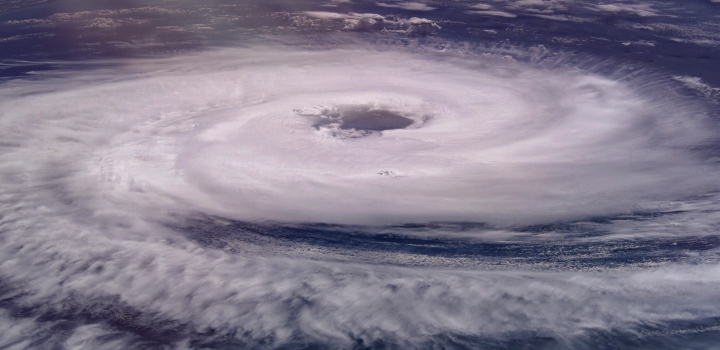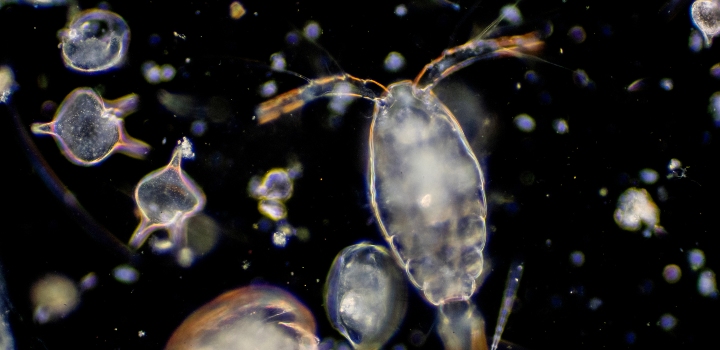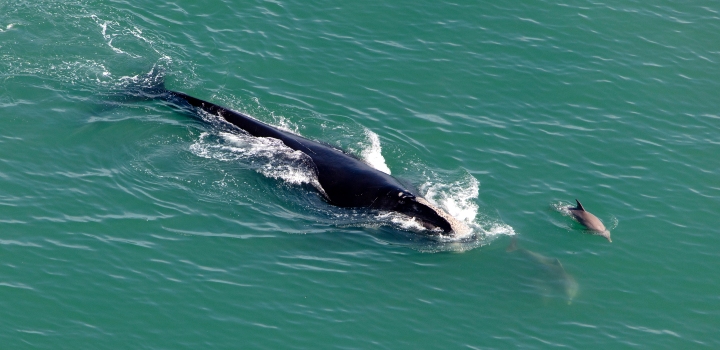Intensity of tropical cyclones is probably increasing due to climate change
By: Communications

Many tropical cyclone-prone regions of the world are expected to experience storm systems of greater intensity over the coming century, according to a review of research published today in ScienceBrief Review.
Moreover, sea level rise will aggravate coastal flood risk from tropical cyclones and other phenomena, even if the tropical cyclones themselves do not change at all. Models also project an increase in future tropical-cyclone precipitation rates, which could further elevate the risk of flooding.
Researchers at Princeton University, the U.S. National Oceanic and Atmospheric Administration (NOAA), and the University of East Anglia (UEA) examined more than 90 peer-reviewed articles to assess whether human activity is influencing tropical cyclones, including tropical storms, hurricanes and typhoons. The studies showed growing evidence that climate change is probably fuelling more powerful hurricanes and typhoons, a trend that is expected to continue as global temperatures rise, amounting to a roughly 5 per cent increase in maximum wind speeds if the globe warms by 2 degrees Celsius.
The influence of climate change on tropical cyclones has been notoriously difficult to separate from natural variability. But an increasingly consistent picture is emerging that suggests human activities are probably influencing some aspects of these extreme weather events, although the exact extent of the human influence is still difficult to determine confidently in today’s observations. Many of the observed trends in tropical cyclones are at least qualitatively consistent with expectations from a warming climate.
The ScienceBrief Review, ‘Climate change is probably increasing the intensity of tropical cyclones’, is published today as part of a collection on critical issues in climate change science to inform the COP26 climate conference.
Observations show that since about 1980, the intensity of tropical cyclones has increased globally, with a larger proportion of powerful cyclones and an increase in the rate at which they intensify, especially in the North Atlantic.
However, century-scale records of landfalling hurricanes and major hurricanes for the continental United States — as well as tropical cyclone landfalls for Japan and eastern Australia — fail to show any significant increase over time.
The mixed picture — revealed by past observations such as these — is one reason why it has been so difficult to unequivocally attribute past changes in tropical cyclone activity to the century-scale build-up of greenhouse gases in the atmosphere, which has caused global warming, according to the authors.
Other factors influencing tropical cyclones, including natural climate variability such as El Niño and La Niña events, and changes in air pollution that create local cooling or warming trends over decades, may have influenced the recent trends since 1980. A key research question is how future greenhouse gas-dominated global warming will influence tropical cyclone behaviour over the coming century.
Prof Corinne Le Quéré, Royal Society Professor at UEA’s School of Environmental Sciences, edited the COP26 special issue of ScienceBrief Review. She said: “There is moderate consensus that climate change is already playing a role in the development of tropical cyclones, but it is early days. In comparison with wildfires, the consensus is already clear that climate change increases the risks, as shown earlier on ScienceBrief Review.”
Projections with climate models suggest that with further warming in coming decades, a larger proportion of Category 4 and 5 tropical cyclones will occur globally — with more damaging wind speeds and more extreme rainfall rates. The damage potential of storms will also depend on factors such as the change in storm trajectory, frequency, size, intensity and rainfall. The actual damage from storms will also be influenced by human factors including the location and vulnerability of buildings and infrastructure.
Tropical cyclones could also intensify more rapidly, and move more slowly in some regions, exacerbating extreme rainfall in localised areas. An extreme example of tropical cyclone flooding induced by a stalled system occurred with Hurricane Harvey in Texas in 2017.
Thomas Knutson, Division Leader at NOAA’s Geophysical Fluid Dynamics Laboratory on Princeton University’s Forrestal Campus, led the review.
Gabriel Vecchi, Princeton professor of geosciences and the High Meadows Environmental Institute and a co-author on the study, said: “Larger and more intense tropical cyclones tend to cause more damage than smaller, weaker storms, so shifts toward a greater proportion of intense storms are of concern.
“The intensity of tropical cyclones has increased globally in recent decades, with the proportion of Category 3 to 5 cyclones growing by around 5 per cent per decade since 1979.
“It is still difficult to firmly attribute those trends to human-induced climate change because there are also other factors influencing these storms.”
There is increased risk of inundation due to rising sea levels, with heavy rainfall projected to intensify due to enhanced moisture in the air as the climate warms.
Observations indicate the latitude at which tropical cyclones reach their peak intensity has been migrating poleward in most basins, raising the potential that those storms could begin to bring greater impacts to locations that may be less well-equipped to respond.
Modelling studies, supported by the theory of potential intensity of tropical cyclones, find that mean intensities are projected to increase by about +5 per cent for a +2 degrees C global warming scenario, and near-storm rainfall rates to increase globally by an average of +14 per cent.
Maya Chung, a PhD candidate in Princeton’s Program in Atmospheric and Oceanic Sciences, said that in coastal regions, higher storm inundation levels will be among the greatest potential impacts of future tropical cyclones under climate change.
She said: “The combination of likely increased storm intensity and rainfall rates and continued sea-level rise will act to increase the inundation risk of low-lying, unprotected regions.
“The total inundation risk will depend on a variety of storm-related factors as well as sea level rise.”
Whereas model projections suggest a greater proportion of higher-intensity cyclones, most model studies project the total number of tropical cyclones each year will decrease or remain approximately the same.
The 2020 hurricane season in the North Atlantic had both a high number of named storms and a high number of intense hurricanes, with six storms in Category 3 to 5.
Thomas Knutson said: "It is possible that in the real world, hurricane activity will increase more than suggested by the range of existing studies — or perhaps less.
“Unfortunately, humans are on a path to find out through actually increasing global temperatures beyond levels experienced during human history, and then we will see how things turn out."
Prof Le Quéré said: “The impacts of climate change are becoming increasingly clear as new evidence becomes available and because our impact on the climate is also growing.
“Continually assessing the scientific evidence is critical to informing the decisions to be made at the COP26 in Glasgow later this year.”
‘Climate change is probably increasing the intensity of tropical cyclones’, Thomas R. Knutson, Maya V. Chung, Gabriel Vecchi, Jingru Sun, Tsung-Lin Hsieh and Adam J. P. Smith, is published at ScienceBrief.org on 26 March 2021.
Related Articles

Ambitious research to study fundamental earth and environmental science questions
The University of East Anglia is leading one of five innovative new research projects that could push the boundaries of science and help us understand key questions of environmental and earth science.
Read more
Government boosts UK resilience against climate change
New research to step up the UKs resilience to the impacts of climate change, such as flooding, heatwaves and extreme weather storms, is made possible by the launch of a new 5 million research programme today.
Read more
New technology ‘listens’ for endangered right whales
One of the worlds most endangered whale species could have added protection from threats posed by human marine activity, through technology developed by the University of East Anglia (UEA).
Read more